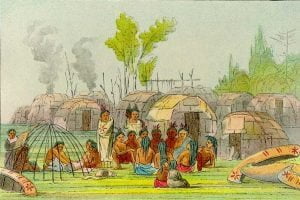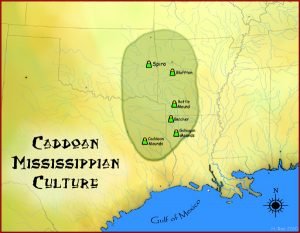Houses of the Caddo Tribe
The “Caddo proper,” or Cenis as they were called by Joutel, early occupied the southwestern part of the present State of Arkansas, the Red River Valley, and adjacent region to the south and west. La Salle was murdered near the banks of the Trinity, in eastern Texas, March 20, 1687. Joutel and several others of the party pushed on, and nine days later, when traversing the valley of the Red River, arrived at a village of the Cenis. Fortunately a very good account of the people and their homes is preserved in Joutel’s narrative, and from it the following quotations … Read more


